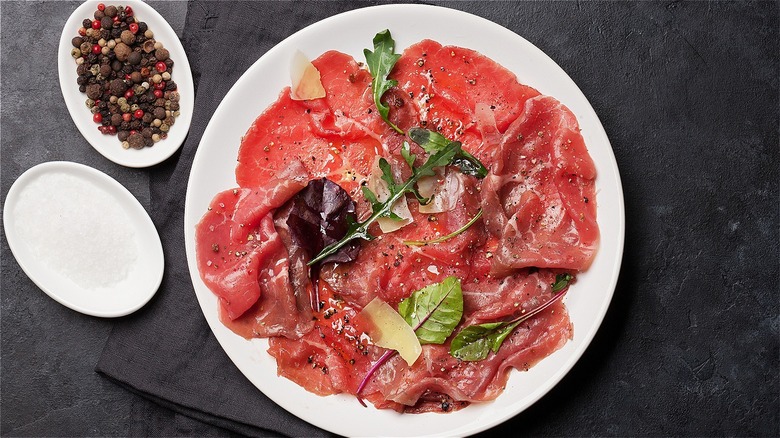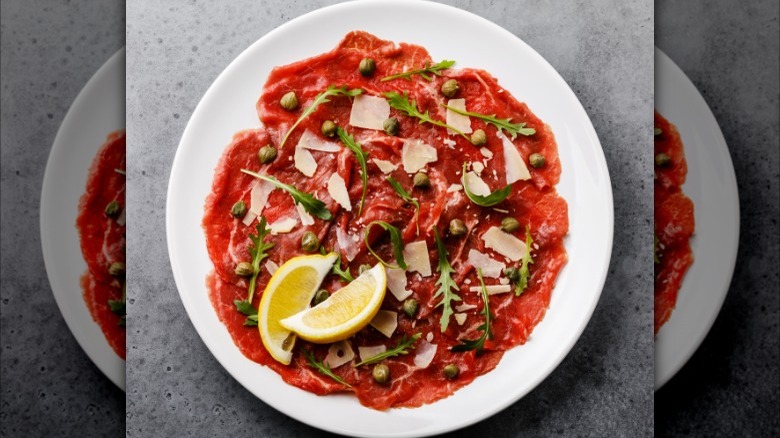How Safe Is It To Eat Carpaccio?
Have you ever looked at a menu at a fancy restaurant, read the word "carpaccio," and wondered what it was and if it was safe to eat? Well, you're not alone. Carpaccio is a popular appetizer from Italy that consists of raw meat that's sliced extremely thin and topped with lemon juice and olive oil. Traditionally, carpaccio is made using raw beef, but some versions also use raw tuna, raw veal, raw salmon, raw venison, and even raw fruits and vegetables for a vegan-friendly option. Carpaccio may also be topped with salt, pepper, salad greens, sprouts, Parmigiano cheese, and various mustard- and mayonnaise-based sauces.
Interestingly, carpaccio was named after the Italian painter Carpaccio, who painted a lot with different shades of yellow and red. The dish itself was created by Guiseppe Cipriani in 1950 when countess Amalia Nani Mocenigo asked for a dish made with raw meat to suit the new diet her doctor recommended for her. Cipriani created what we know today as carpaccio, and named it as such because the dish resembled the colors used in Carpaccio's art. However, since raw meat is the bulk of this dish, you may be wondering just how safe it actually is to eat carpaccio. Here's what you need to know.
It's not considered safe to eat any type of raw meat
While many people around the world do so, it's never really considered safe to eat raw meat. The United States Department of Agriculture (USDA) says that all meats should be fully cooked to their appropriate temperatures before being eaten. Beef, veal, and fish must all be cooked until their internal temperatures reach 145 degrees Fahrenheit. Venison, on the other hand, should be cooked to an internal temperature of 160 degrees Fahrenheit, per Food Safety.
Not cooking meats to their safe internal temperatures could lead to food poisoning, according to the Centers for Disease Control and Prevention (CDC). Food poisoning is a serious illness that about 48 million Americans are affected by each year. In addition to eating raw meat, a few other foods that could cause food poisoning include raw milk and juice, soft cheeses made with raw milk, and raw sprouts. Although some people may be able to eat raw meat and not get sick from it, pregnant women, children, people with weak immune systems, and elderly people are more at risk for food poisoning, so they should avoid it entirely.

